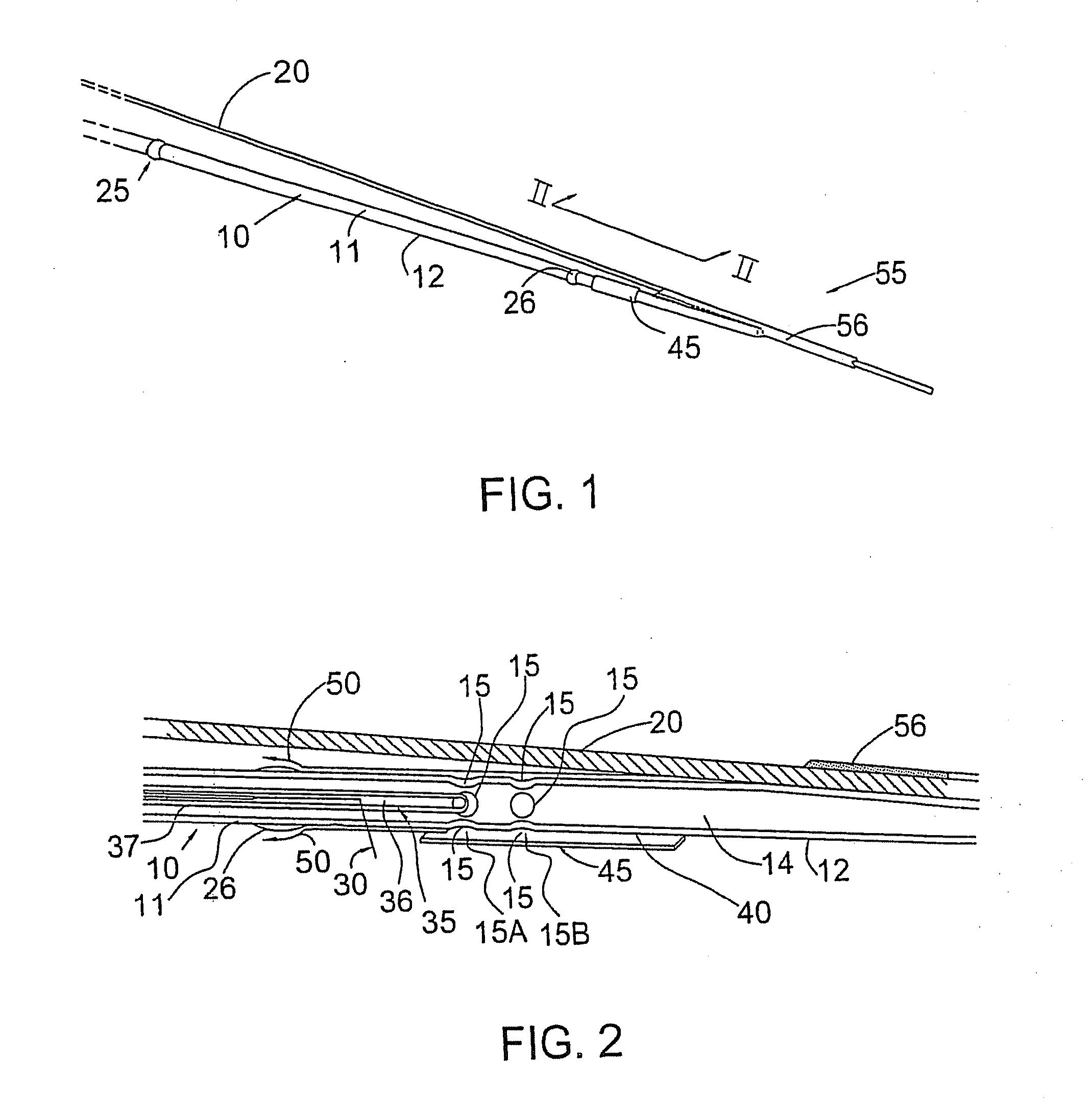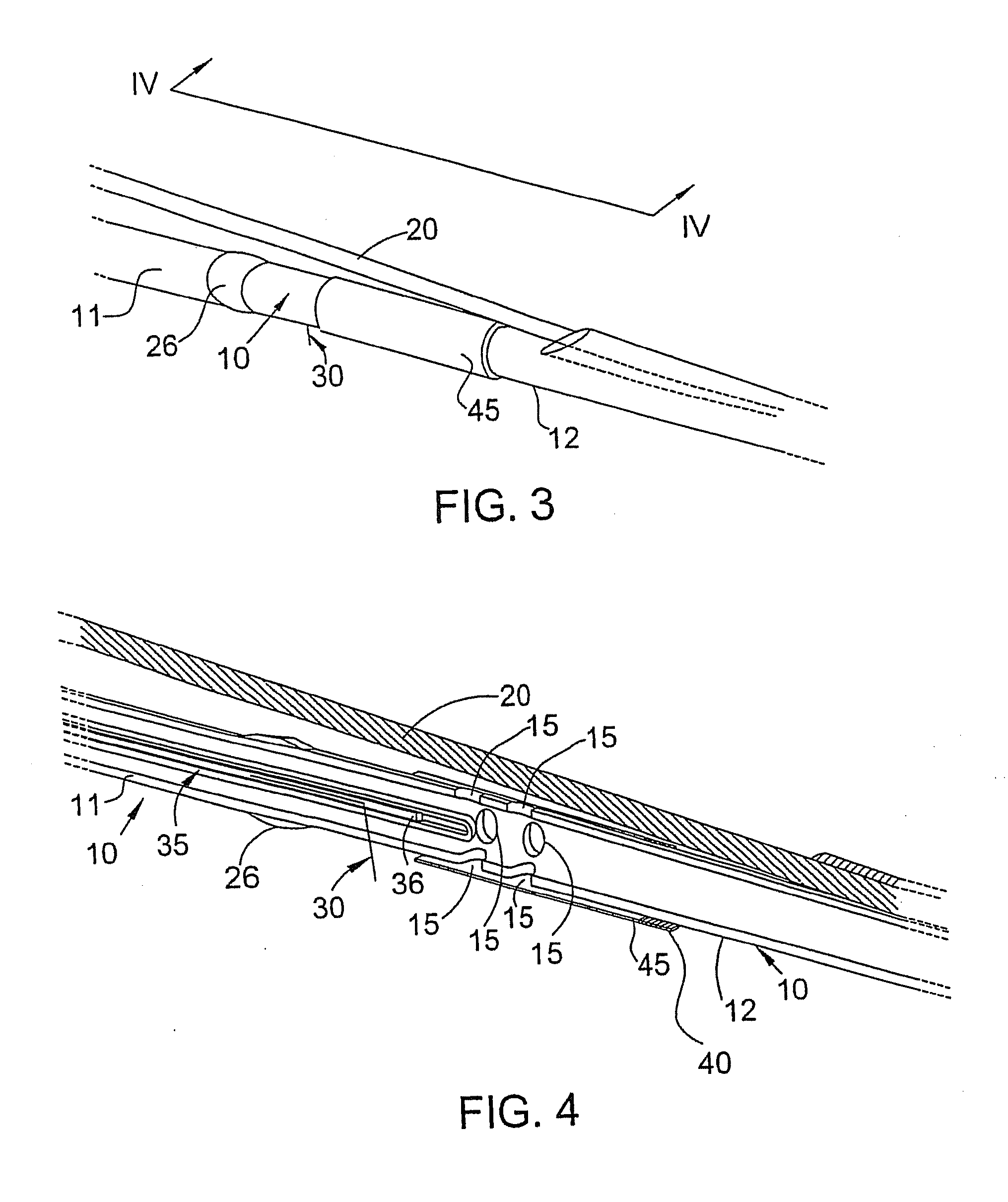Flush catheter with flow directing sheath
a technology of flow directing sheath and catheter, which is applied in the field of flush catheter, can solve the problems of hydrating the patient, unable to provide ideal solutions, and ineffective methods,
- Summary
- Abstract
- Description
- Claims
- Application Information
AI Technical Summary
Benefits of technology
Problems solved by technology
Method used
Image
Examples
Embodiment Construction
[0036]The invention is directed to a flush catheter configured to be inserted into an artery, vessel, or other orifice in a patient. In addition, embodiments of the invention are also directed to the use of flush solutions having predetermined viscosities.
[0037]Blood has a viscosity of approximately 3-4 centipoise (cps), dependant primarily on the hematocrit level. In contrast, water, by definition, has a viscosity of 1.00 cps. One of the primary contributors to flow resistance and hence blood pressure, is the resistance of the fine-diameter capillary bed at the terminus of each artery. When selecting among candidate flush solutions, the impact of this resistance on selected flow rate and pressure is an important consideration. If, for example, a saline flush were used, when collecting OCT imaging data, within one heart cycle the capillaries would fill with saline and the flow resistance would drop by a factor of 3 or more due to the viscosity change. To prevent blood from entering ...
PUM
 Login to View More
Login to View More Abstract
Description
Claims
Application Information
 Login to View More
Login to View More - R&D
- Intellectual Property
- Life Sciences
- Materials
- Tech Scout
- Unparalleled Data Quality
- Higher Quality Content
- 60% Fewer Hallucinations
Browse by: Latest US Patents, China's latest patents, Technical Efficacy Thesaurus, Application Domain, Technology Topic, Popular Technical Reports.
© 2025 PatSnap. All rights reserved.Legal|Privacy policy|Modern Slavery Act Transparency Statement|Sitemap|About US| Contact US: help@patsnap.com



